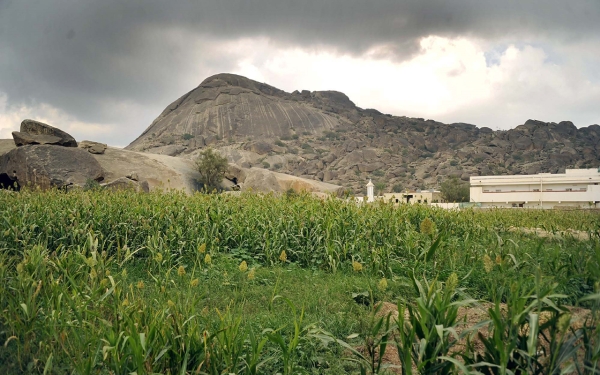


Al-Makhwah Governorate is a governorate in al-Bahah Province, southwest of the Kingdom of Saudi Arabia. It is located forty-five km to the west of the headquarters of the Emirate of Al-Bahah and is connected to it via the King Fahd Road also known as Aqabat al-Baha. It extends along the Sarawat Mountains in the east, and according to the 2022 Saudi Census, al-Makhwah has about 48,333 inhabitants.
Location and centers of al-Makhwah
Al-Makhwah Governorate, which is administratively classified as Category (A), is located in al-Bahah Province, on the banks of several valleys, such as Wadi Rash, Wadi Dayan, Wadi Saqama, Wadi Batat, Wadi al-Ahasaba, Wadi Mamna, Wadi Rahba, and Wadi al-Milh. Groundwater is plentiful in the governorate that oversees seven administrative centers: Nawan, Nira, al-Jawah, Shada al-A’la, Shada al-Asfal, Wadi Mamna, and Wadi al-Ahasaba.
Agriculture in al-Makhwah
Agriculture is one of the key economic activities in al-Makhwah Governorate, with intensive cultivation of oranges, bananas, mangos, lemons, and mandarins, in addition to vegetables, corn, and millet. Al-Makhwah’s climate is hot in the summer and moderate in the winter, with varying rainfall.
Commercial traffic in al-Makhwah
Due to its central location between al-Bahah City and al-Qunfudhah Governorate, al-Makhwah Governorate witnesses commercial activity, represented by establishing markets that showcase agricultural and animal produce to shoppers coming from al-Qunfudhah borders, Namirah, and al-Bahah.

Archaeological sites in al-Makhwah
The governorate includes several archaeological sites, villages, castles, and forts, including the archaeological stone-built village of Thee Ain, and Asham village that contains Islamic writings and inscriptions dating back to the early Islamic era, in addition to the villages of Madaq, Bani Sharfa, and Masharifa. Al-Mikhwah is also home to Jabal Shada al-A’la, soaring 2,200 m above sea level. It includes a number of caves and grottoes with Thamudic inscriptions and depictions dating back three millennia. In 2001, it was transformed into a nature reserve by the National Center for Wildlife Development. Many rare species live on the mountain, such as the Arabian leopard, striped hyena, Arabian wolf, foxes, lynx, and hyrax.
Related quizzes
Related articles

